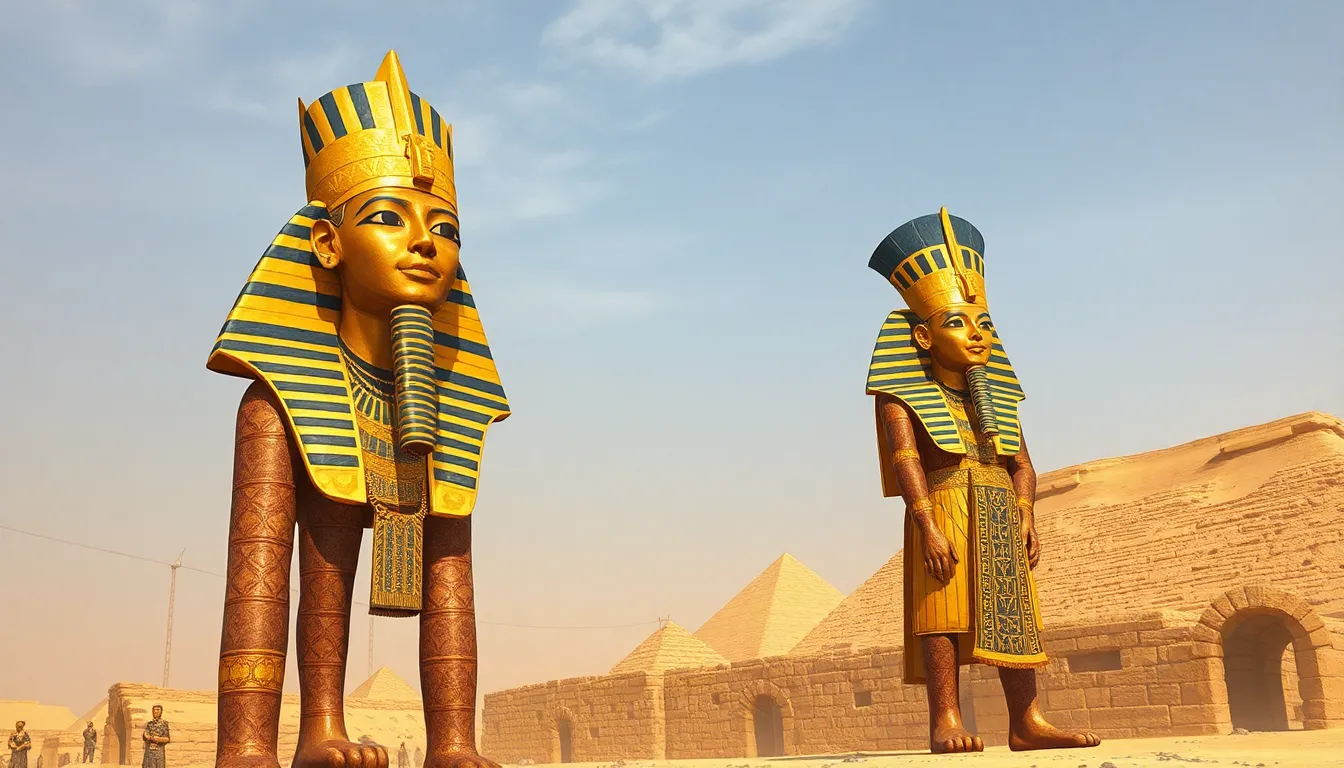The Legendary Pharaohs of the New Kingdom: Myths and Facts
Introduction
The New Kingdom period in ancient Egypt, which lasted from approximately 1550 to 1070 BCE, is often regarded as the height of Egyptian civilization. This era saw the flourishing of art, culture, and military power, driven largely by the Pharaohs who ruled with divine authority. The Pharaohs were not merely political leaders; they were seen as gods on earth, tasked with maintaining ma’at, or cosmic order. This article aims to explore the myths and facts surrounding some of the most legendary Pharaohs of the New Kingdom, highlighting their contributions and the narratives that have shaped their legacies.
The Rise of the New Kingdom: A Historical Context
The New Kingdom emerged from the ashes of the Second Intermediate Period, a time marked by political fragmentation and foreign rule. Following the expulsion of the Hyksos, Egypt entered a phase of unprecedented expansion and prosperity.
- Key Factors for Expansion:
- Military conquests that extended Egypt’s borders into Nubia and the Levant.
- Increased trade relations with neighboring regions, boosting wealth and resources.
- A strong centralized government that allowed for efficient administration and resource management.
The Pharaoh played a pivotal role in this structure, serving as the supreme ruler, military leader, and religious figure, thus unifying the nation under their divine right to rule.
Famous Pharaohs of the New Kingdom
Several Pharaohs from the New Kingdom stand out due to their remarkable achievements and enduring legacies:
- Hatshepsut: The first female Pharaoh, known for her successful trade expeditions.
- Thutmose III: Often called the “Napoleon of Egypt,” he expanded the empire to its greatest extent.
- Akhenaten: Known for introducing monotheism with the worship of Aten.
- Tutankhamun: The boy king whose tomb discovery in 1922 captivated the world.
- Ramses II: Renowned for his military conquests and monumental architecture.
Hatshepsut: The Female Pharaoh Who Defied Tradition
Hatshepsut reigned during the early New Kingdom and is often remembered for her defiance of traditional gender roles. Myths surrounding her reign include the notion that she usurped the throne from her stepson, Thutmose III. However, historical evidence suggests that she ruled as a co-regent and later as a sole Pharaoh with the full backing of the priesthood.
Her reign was marked by:
- Successful Trade Expeditions: Hatshepsut organized trade missions, most notably to the Land of Punt, which brought back valuable resources like gold, ivory, and exotic goods.
- Monumental Building Projects: She commissioned impressive structures, including her mortuary temple at Deir el-Bahari, which is celebrated for its architectural innovation and artistic beauty.
Akhenaten: The Revolutionary Pharaoh
Akhenaten is often viewed as one of the most controversial Pharaohs due to his radical shift in religious practices. He introduced the worship of Aten, the sun disk, effectively establishing a form of monotheism. This was a significant departure from the traditional polytheistic beliefs of ancient Egypt.
The myths surrounding Akhenaten include his portrayal as a heretic who disrupted the established religious order. In reality, while his reign did lead to significant changes, it also faced considerable resistance from the traditional priesthood and ultimately was reversed after his death.
Key aspects of his reign include:
- Artistic Revolution: Akhenaten’s reign saw a unique style of art that emphasized realism and intimacy, reflecting the new religious ideology.
- The Capital of Akhetaten: He established a new capital city, Akhetaten (modern-day Amarna), dedicated to the worship of Aten.
Tutankhamun: The Boy King and His Legacy
Tutankhamun, often referred to as the “boy king,” ascended to the throne at a young age and ruled for a brief period. His reign is overshadowed by the discovery of his nearly intact tomb in 1922, which revealed an incredible wealth of artifacts.
The myth of Tutankhamun’s curse emerged after several individuals associated with the tomb’s discovery died under mysterious circumstances, fueling speculation and intrigue. However, the reality of his reign was quite different:
- Restoration of Polytheism: His reign marked a return to traditional polytheistic beliefs after Akhenaten’s reforms.
- Significance of Artifacts: The treasures found in his tomb, including the famous golden mask, provide invaluable insights into ancient Egyptian culture and burial practices.
Ramses II: The Great Builder and Warrior
Ramses II, often called Ramses the Great, is celebrated for his military prowess and monumental building projects. He reigned for 66 years, making him one of the longest-serving Pharaohs in history.
His contributions include:
- Military Campaigns: Ramses II led numerous campaigns against the Hittites and other neighboring nations, securing Egypt’s borders and expanding its influence.
- Architectural Achievements: He is renowned for constructing magnificent temples, such as those at Abu Simbel, which are celebrated for their grandeur and artistry.
Myths surrounding Ramses II often depict him as a god-like figure who lived for centuries, yet historical evidence indicates he was a remarkable leader who significantly shaped Egypt’s landscape and legacy.
Conclusion: The Enduring Legacy of the New Kingdom Pharaohs
The myths surrounding the legendary Pharaohs of the New Kingdom have profoundly influenced our understanding of these historical figures. While some narratives exaggerate or distort their achievements, the facts reveal a complex tapestry of power, innovation, and cultural richness that defined this era.
Today, the legacies of these Pharaohs continue to resonate, not only within the field of Egyptology but also in popular culture. Their stories inspire a deeper exploration of ancient Egyptian history, inviting us to look beyond the myths and embrace the rich truths that lie within this fascinating civilization.




